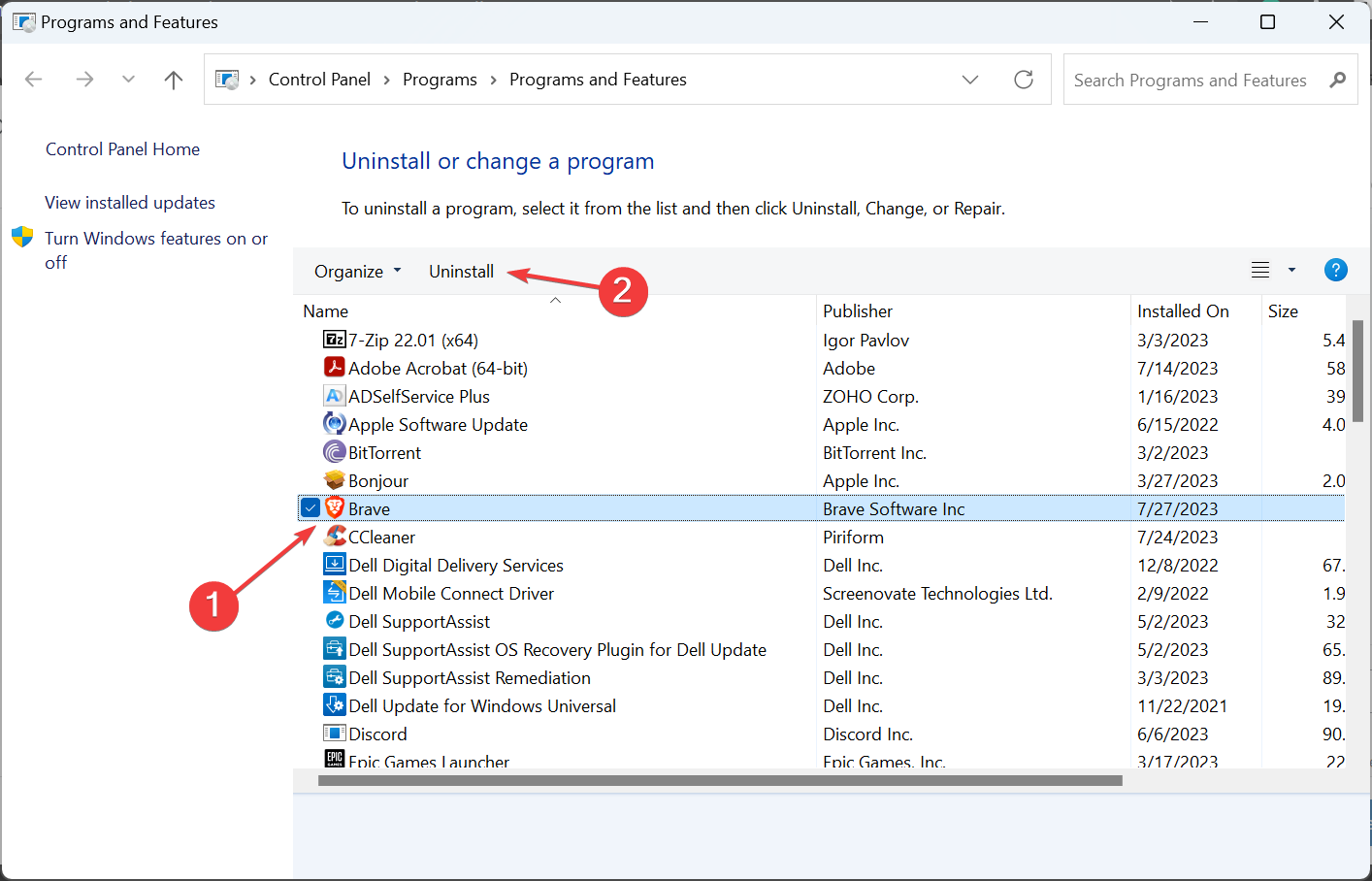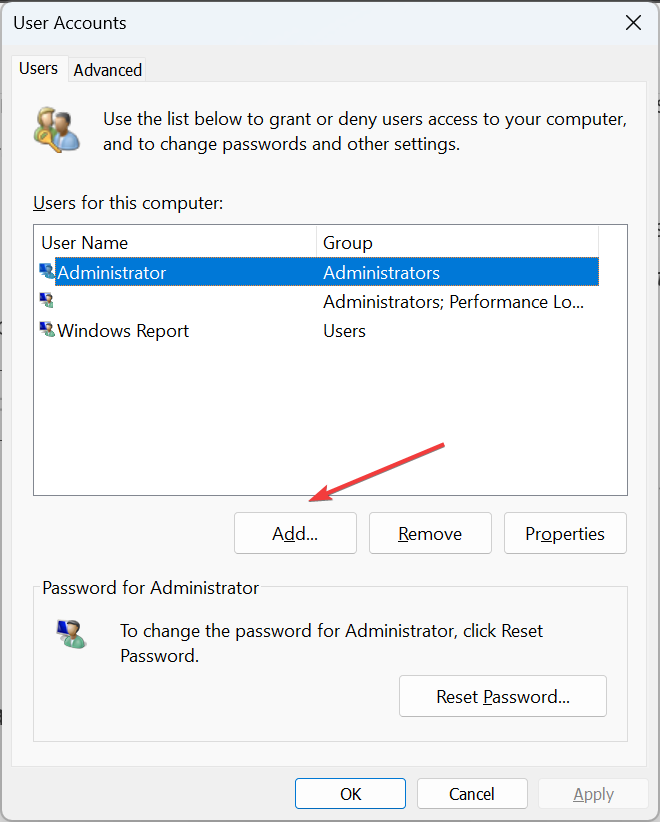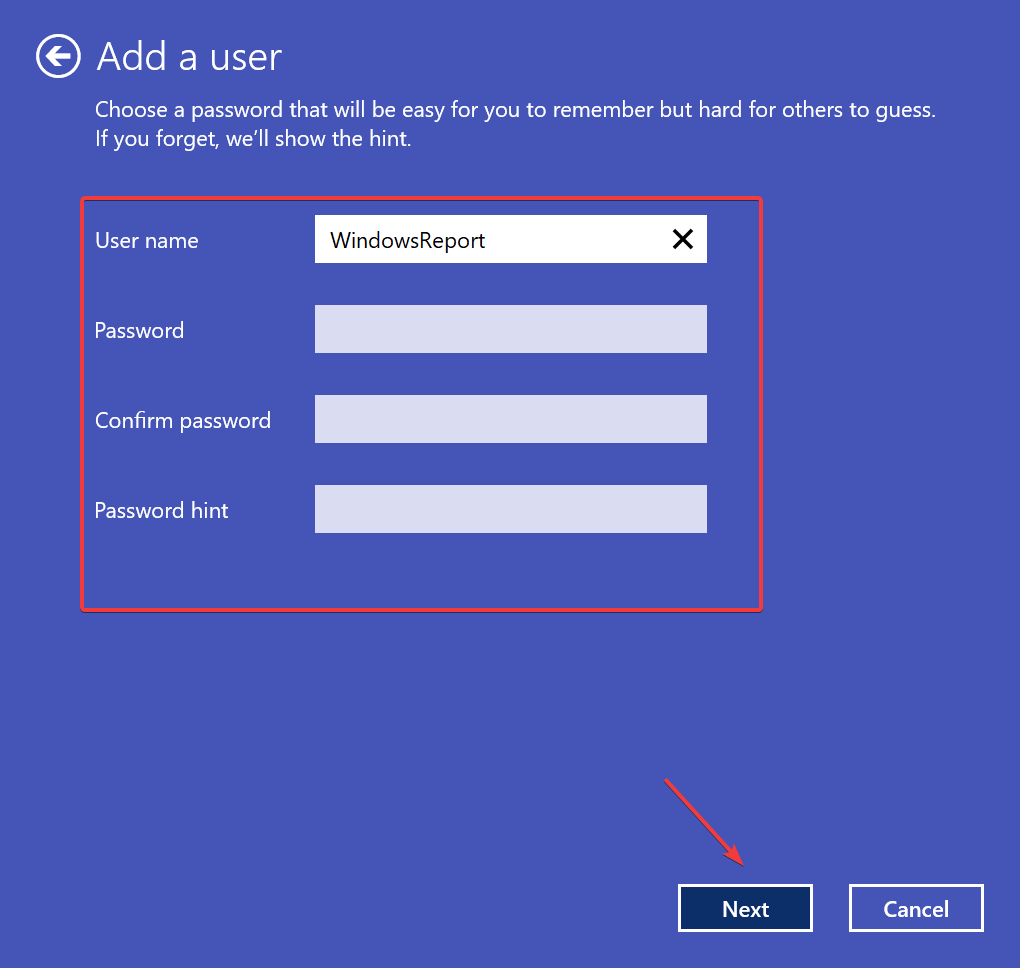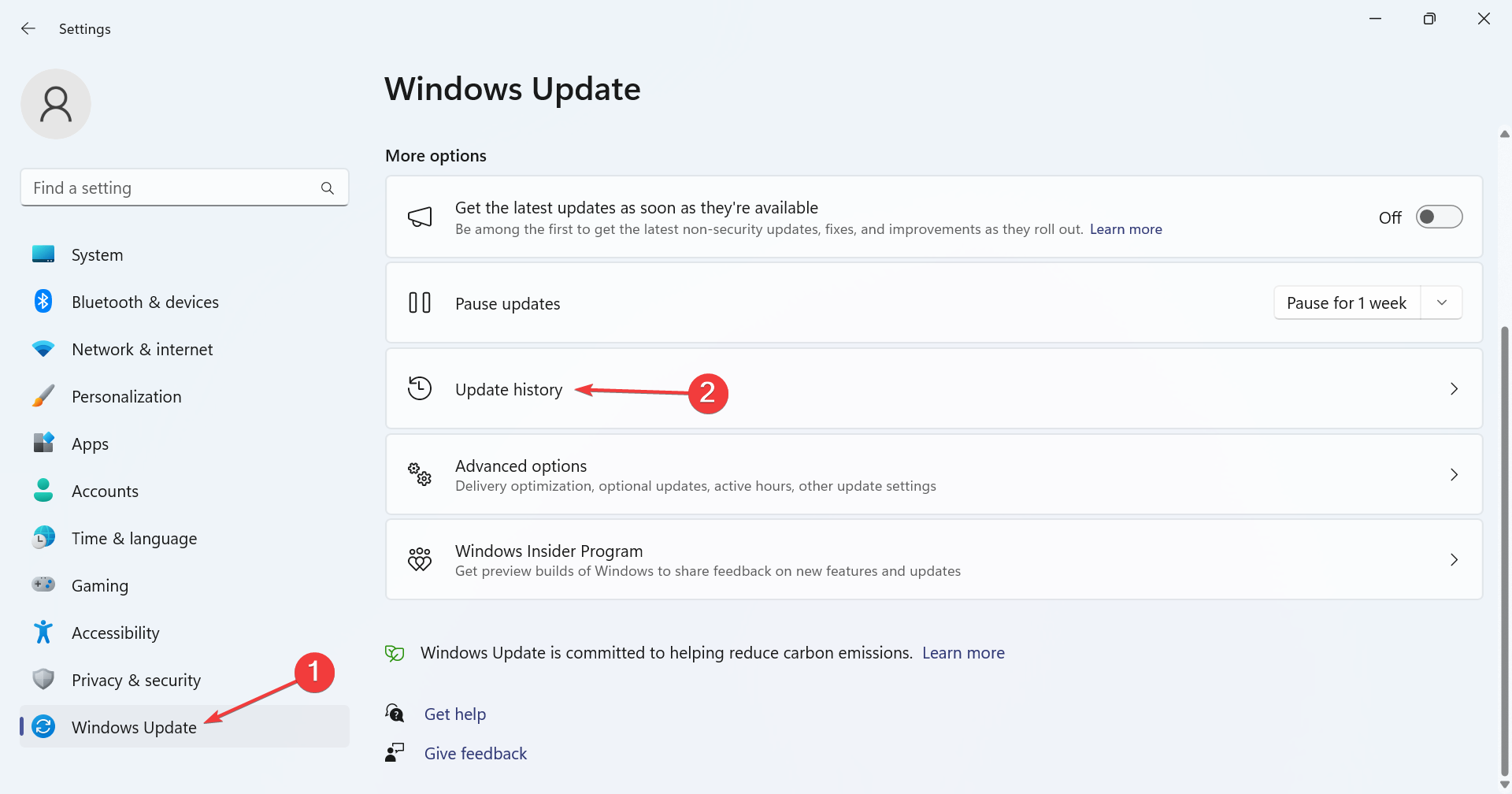Fix: LSA Database Contains an Internal Inconsistency
Check for recent changes and uninstall problematic apps
5 min. read
Updated on
Read our disclosure page to find out how can you help Windows Report sustain the editorial team Read more
Key notes
- The local security authority database contains an internal inconsistency error indicates a recent change in network settings or issues with the user profile.
- Your primary approach should be to disable the firewall and scan the PC for malware, particularly for CryptoWall.
- A few found that clearing the user profile in HP ProtectTools did the trick.

When working with drive mapping and network sharing, a lot can go wrong. Wireless networks aren’t as reliable as their wired counterparts. And an error that has been bugging users is The local security authority database contains an internal inconsistency.
This affects all network drives, and users cannot access one or connect to it. The error also creates issues with network shares via Samba to Linux and other stations.
In some cases, users come across the message, Drive is not accessible. You might not have permission to use this network resource. The local security authority database contains an internal inconsistency. Keep reading to find out all about the problem!
Why is the network drive not accessible?
Here are a few reasons the network drive stopped working suddenly:
- Missing permissions: Often, the problem arises due when accessing the network using an account with insufficient privileges, usually a local account.
- Corrupt user profile: For a few users, the user profile was corrupt, and as a result, they kept seeing, The local security authority database contains an internal inconsistency error on the Microsoft Windows network.
- Third-party apps affect the connection: Third-party apps are just as likely to reconfigure the network settings, maybe adding a restriction or two, which, subsequently, triggers the error.
- Installed a buggy Windows update: In some cases, the problem appeared after updating Windows, which points to a bug in the latest version.
What can I do if the LSA database contains an internal inconsistency?
Before we move to the slightly tricky solutions, here are a few quick ones to try:
- Restart all the devices on the network, including the NAS (Network Attached Storage).
- Disable any third-party firewalls or security software configured on the PC.
- Scan your PC for malware using a reliable antivirus solution. For a few users, The local security authority database contains an internal inconsistency error gets triggered when the lsass.exe file is affected by the CryptoWall malware.
If none work, head to the fixes listed next.
1. Add ACL support to Samba
The solution is specific to cases where you worked out the network share using Samba and recently got ACL support. A user shared that adding the following parameter to the smb.conf file should fix things:[myshare]
nt acl support = yes
Once done, make sure to restart the Samba service and reboot the connected devices for the changes to come into effect.
2. Clear your profile from HP ProtectTools
 Tip
Tip
When facing issues accessing the network drive or logging into Windows, a quick solution is to remove the user profile from HP ProtectTools.
Just head to the dedicated section, clear the user profile, save the changes, and restart the computer. Most users managed to fix The local security authority database contains an internal inconsistency error by deleting the profile in HP ProtectTools.
3. Uninstall conflicting applications
- Press Windows + R to open Run, type appwiz.cpl in the text field, and click OK.
- Select the application that was installed or updated around the same time the error first appeared, and click Uninstall.
- Follow the on-screen instructions to complete the process.
A third-party application with permission to modify the user credentials or network settings can often cause issues while accessing mapped drives. Based on our research, we found these two to commonly trigger the error:
- HP ProtectTools
- Dell Data Protection
4. Create a new user account
- Press Windows + R to open Run, type netplwiz in the text field, and hit Enter.
- Click the Add button.
- Click on Sign in without a Microsoft account.
- Select the Local account option.
- Fill out the profile details, username and password, then click on Next to proceed.
- After creating the profile, select it, and click on Properties.
- Navigate to the Group membership tab, select Administrator, and click on OK to save the changes.
- Once done, restart the computer, sign in with the new user account, and check whether you can access the network drive.
Several users reported that creating a new user account fixed things when they kept getting The local security authority database contains an internal inconsistency while signing into Windows. Just make sure to create an administrator account.
5. Uninstall recent Windows updates
- Press Windows + I to open Settings, go to Windows Update from the navigation pane, and click on Update history.
- Scroll down to the bottom and click on Uninstall updates.
- Locate the problematic update, and click the Uninstall option next to it.
- Again, click Uninstall in the confirmation prompt.
When the problem first appeared after updating Windows, uninstalling that particular update should fix things as well. You may have to remove a few updates before actually identifying the culprit.
6. Perform a factory reset
If none of the solutions presented here work, it’s likely a tricky issue triggering The local security authority database contains an internal inconsistency error. Here, the only viable option is to factory reset Windows.
Remember, this will delete the stored files (we recommend choosing the option for high effectiveness), so make sure you create a backup beforehand. Also, after the reset, you will have to reconfigure the network setting and map the network drive, but it will get things running!
Before you leave, find out how to use your PC as a Wi-Fi extender and save quite a few bucks on purchasing the actual hardware.
For any queries or to share the solution that worked for you, drop a comment below.

















